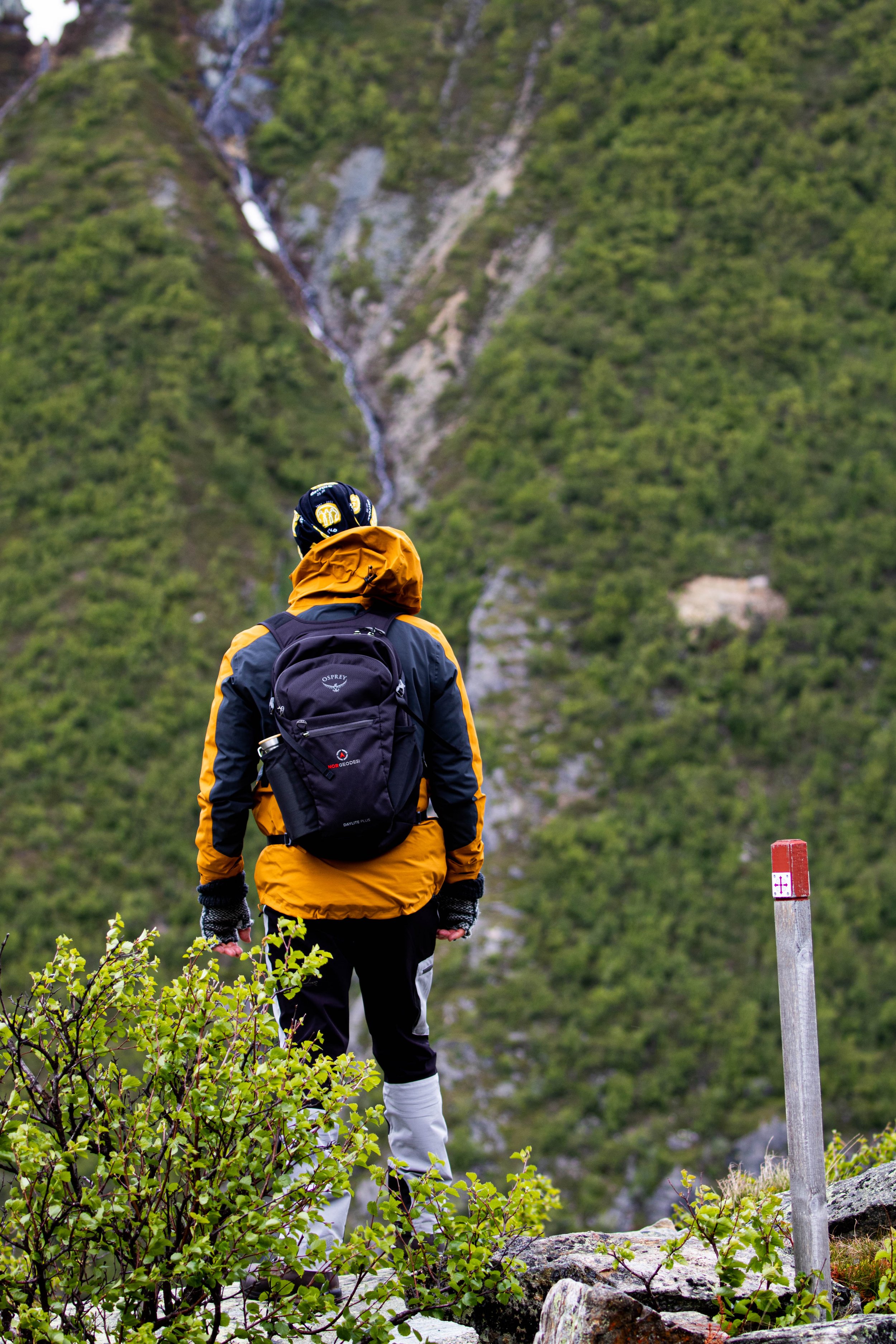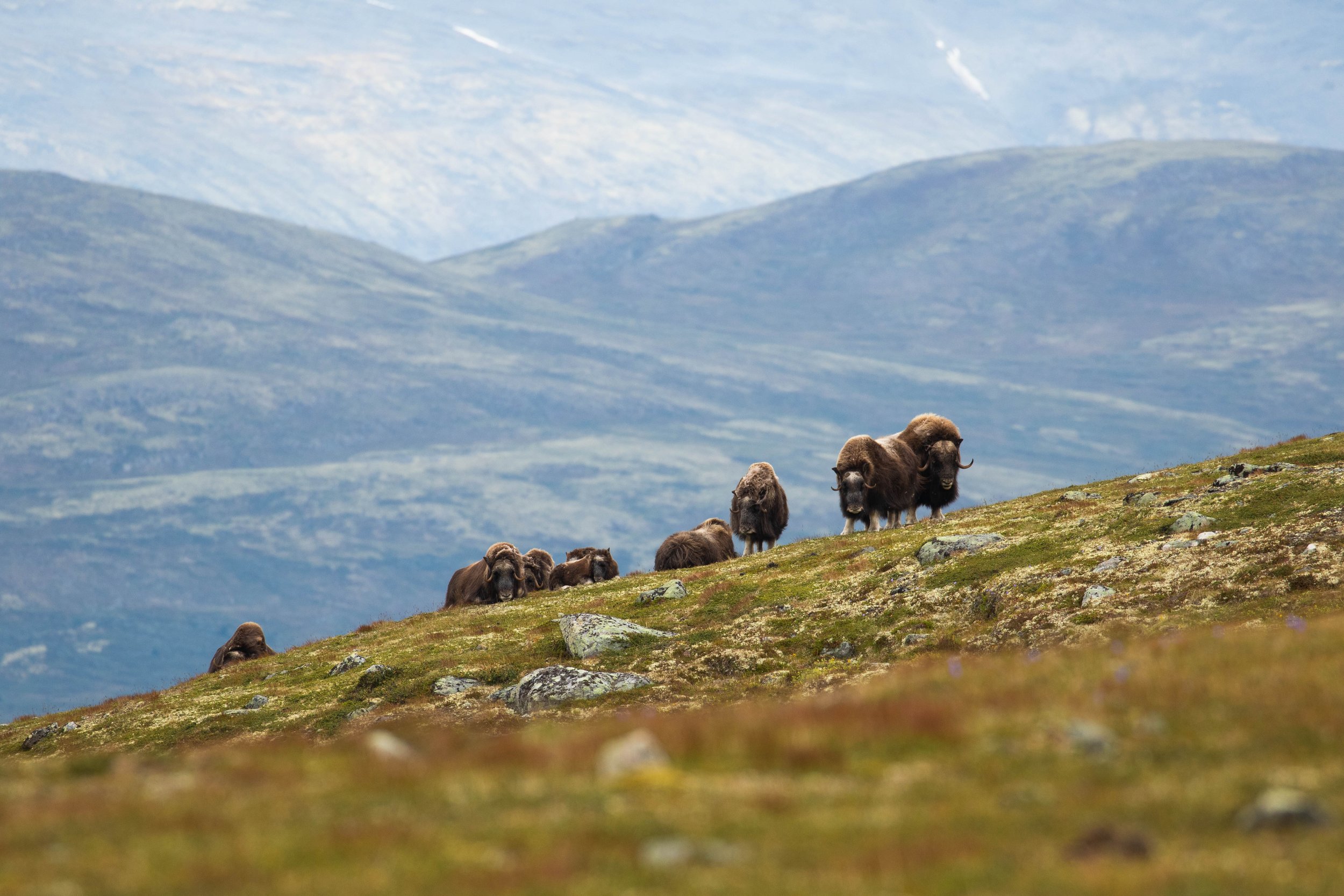We are receiving many requests about muskox safari in May. And although May is a beautiful time, we don’t offer muskox safari during that month. The reason is that in May, the calves of both muskox and reindeer are born. This is of course a vulnerable time for them, and therefore there are restrictions for guiding in the national park.
Instead, we offer an alternative! A guided hike on “Vårstigen”, or “Spring path”. This path goes just outside the national park, and has been used for hundreds of years. Back then, this path was feared by travellers. Later, it got very popular among botanists, because of the special flora in this area - there are even numerous endemic alpine plants! Nowadays, “Vårstigen” is a populair trail for hikers and pilgrims.
And last but not least: you might be able to spot newborn (read: supercute) muskox! And if you do, it will guaranteed be a memory for life. Sure, it will be from a long distance, but how close to a newborn animal and its mother (who has a very strong mother instinct, sharp horns, and can run 60 km/h) do you really want to come?
We in Dovre & Lesja Aktiv have of course had many, many encounters with muskox. But believe it or not, seeing the new born muskox playing in the forest is definitely in the top 5!
Bird watching safari
We also offer bird watching safari. This safari is by car, so suitable for everyone! And if you’re lucky, you might even spot some moose too.
Tips
If you decide to go for a hike in Dovrefjell yourself, please do so with caution. Here are some tips!
Keep distance! For muskox, the safety distance is 200 m. They might seem unafraid or even tame, but this is not the case. Unlike most other widlife, muskox defend themselves rather than running away, and can attack if provoked. Muskox can weigh over 400 kg and run 60 (!) km per hour - and it goes without saying you can’t.
For reindeer, the situation is opposite. They are afraid of people, and get easily stressed when they notice us - which can be from long distances. You should not approach them, and the recommended distance to keep is min 1 km. That being said, spotting reindeer is an incredible experience, so if you do see them (from a distance), enjoy!
To avoid suprises, you should make yourself known to the muskox - don’t sneak up on them. If you meet a herd of muskox, pay attention to the entire herd, as they can be quite spread out.
If you’ve never seen a muskox before, it might be difficult to understand their behavior. When they paw the ground, throw their head back, snort or starts fighting with other muskox, it is their way of telling you they are not okay with the situation. In that case, calmy return the same way you came in.
You can read more about the muskox, reindeer and national park on the website of the national park.



